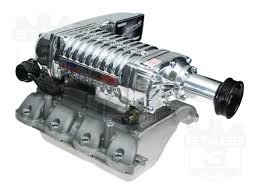forced-induction on:
[Wikipedia]
[Google]
[Amazon]

 In an
In an

 In an
In an internal combustion engine
An internal combustion engine (ICE or IC engine) is a heat engine in which the combustion of a fuel occurs with an oxidizer (usually air) in a combustion chamber that is an integral part of the working fluid flow circuit. In an internal co ...
, forced induction is where turbocharging or supercharging is used to increase the density of the intake air. Engines without forced induction are classified as naturally aspirated.
Operating principle
Overview
Forced induction is often used to increase the power output of an engine. This is achieved by compressing the intake air, to increase the mass of the air-fuel mixture present within thecombustion chamber
A combustion chamber is part of an internal combustion engine in which the fuel/air mix is burned. For steam engines, the term has also been used for an extension of the firebox which is used to allow a more complete combustion process.
Intern ...
. A naturally aspirated engine is limited to a maximum intake air pressure equal to its surrounding atmosphere; however a forced induction engine produces "boost", whereby the air pressure is higher than the surrounding atmosphere. Since the density of air increases with pressure, this allows a greater mass of air to enter the combustion chamber.
Theoretically, the vapour power cycle analysis of the second law of thermodynamics would suggest that increasing the mean effective pressure within the combustion chamber would also increase the engine's thermal efficiency. However, considerations (such as cooling the combustion chamber, preventing engine knock and limiting NOx exhaust emissions) can mean that forced induction engines are not always more fuel efficient, particularly in the case of high-performance engines.
Diesel engines
Four-strokediesel engine
The diesel engine, named after Rudolf Diesel, is an internal combustion engine in which ignition of the fuel is caused by the elevated temperature of the air in the cylinder due to mechanical compression; thus, the diesel engine is a so-ca ...
s are wel